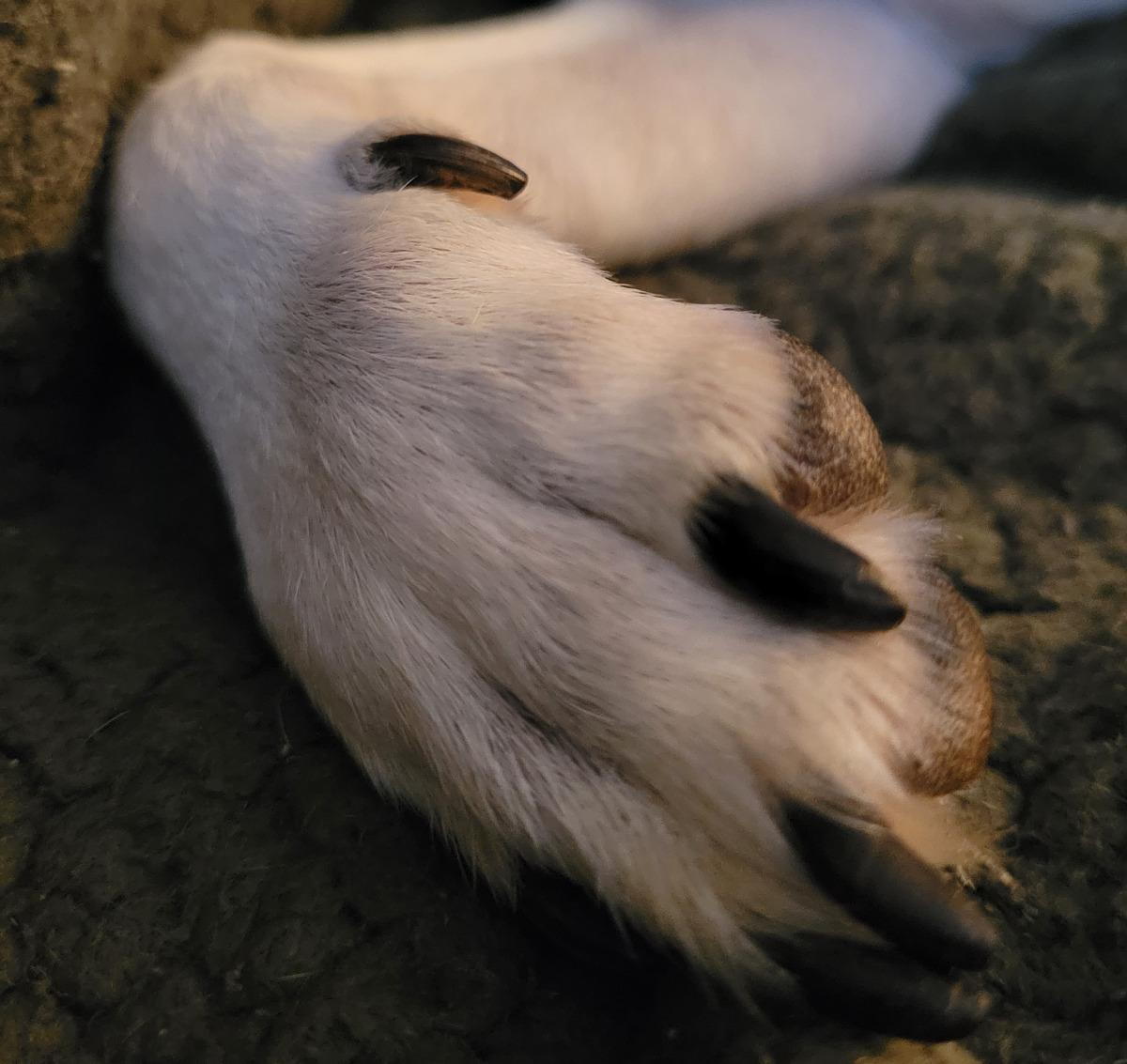Those Darn Dewclaws!

- posted: Nov. 11, 2023
Those Darn Dewclaws!
Most dogs and cats have small claws on the inside surface of their front legs called dewclaws which are a bit like non-functional thumbs, although they may be used in some capacity to grasp objects or prey. Dogs (and occasionally cats) may also have rear dewclaws which are typically not attached to the underlying bones of the paw but are more commonly “loose” and only attached to the skin. Some breeds such as the Great Pyrenees and Briard are known for having a double rear dewclaw. Dewclaws may also provide traction when dogs are running or aid in climbing, especially in cats.
While front dewclaws may be used to grasp objects, rear dewclaws are typically non-functional. All dogs and cats are born with front dewclaws. Both front and rear dewclaws are sometimes removed in very young puppies or kittens shortly after birth or they may be surgically removed. Usually, front dewclaws do not pose a problem but loose rear dewclaws may become caught on objects and the nail could break or, less commonly, the skin could tear. Some people choose to have floppy rear dewclaws removed to prevent future injury. It is not common or necessary to remove front dewclaws. There is typically no medical reason to remove the front dewclaws unless a dog or cat has an injury or tumor. In these cases, the affected dewclaw may be surgically removed.
In addition, because dewclaws do not touch the ground, they do not wear down and should be trimmed regularly along with the pet’s other toenails to prevent the nail from curling around and embedding into the paw pad. Speaking of not touching the ground, the origin of the name “dewclaw” is unknown but has been in use since the 1570’s. One fanciful explanation is that since the toe is located high on the leg, it only touches the dew on the grass, but the true meaning of the term seems to have been lost.
This blog brought to you by the Patton Veterinary Hospital serving Red Lion, York and the surrounding communities.
https://www.akc.org/expert-advice/health/what-are-dog-dewclaws/
Location
Patton Veterinary Hospital
425 E Broadway
Red Lion, PA 17356
